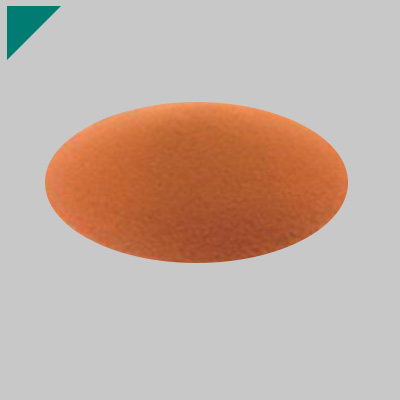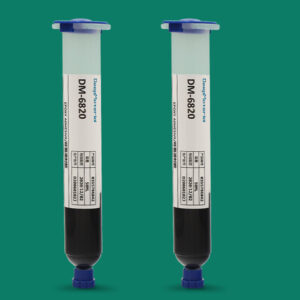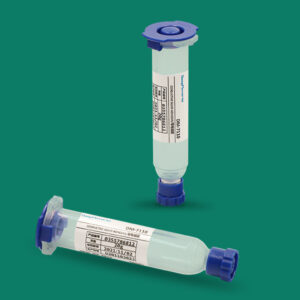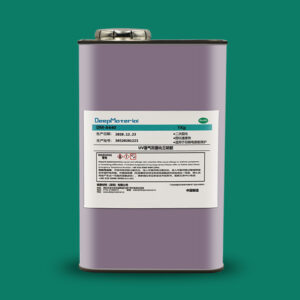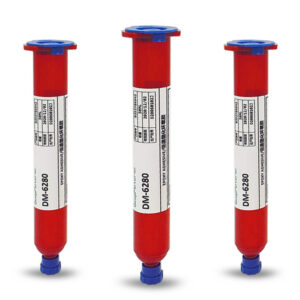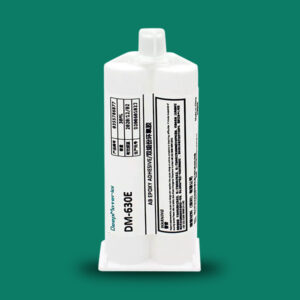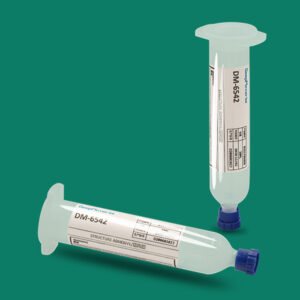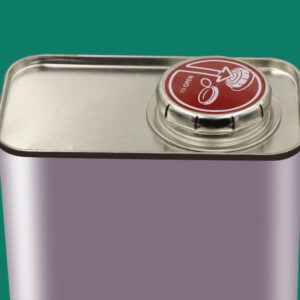Automatic Fire Suppression Materials: Revolutionizing Safety Across Industries
Automatic Fire Suppression Materials: Revolutionizing Safety Across Industries
Fire safety remains a critical concern across industries, from construction and manufacturing to transportation and residential settings. Fires can cause devastating consequences, including loss of life, property damage, and operational disruptions. According to the National Fire Protection Association (NFPA), structure fires in the United States alone caused over $12 billion in property damage in 2023. To combat these risks, automatic fire suppression materials have emerged as a groundbreaking solution, offering proactive, self-activating fire protection without human intervention. These advanced materials, designed to detect and extinguish fires autonomously, are revolutionizing safety by mitigating fire spread, reducing response times, and enhancing resilience. This article explores the mechanisms, applications, innovations, and future potential of automatic fire suppression materials, highlighting their transformative impact on fire safety.

Understanding Automatic Fire Suppression Materials
Automatic fire suppression materials are engineered substances that detect and respond to fire conditions—such as heat, flames, or smoke—without requiring external activation. Unlike traditional fire suppression systems, such as sprinklers or extinguishers, which rely on manual or mechanical triggers, these materials are designed to act autonomously, making them ideal for high-risk environments or scenarios where immediate response is critical. These materials are typically integrated into structures, equipment, or products, providing seamless, built-in fire protection.
The primary goal of automatic fire suppression materials is to suppress or extinguish fires at their earliest stages, preventing escalation and minimizing damage. They achieve this through a combination of chemical reactions, physical barriers, and thermal management, making them versatile for various applications.
Mechanisms of Automatic Fire Suppression Materials
Automatic fire suppression materials operate through several innovative mechanisms, each tailored to specific fire risks and environments. Below are the primary mechanisms driving their effectiveness:
- Intumescent Materials
Intumescent materials are among the most widely used automatic fire suppression materials. When exposed to heat (typically above 200°C), these materials expand dramatically, forming a thick, insulating char layer. This char acts as a thermal barrier, shielding underlying substrates from heat and flames while sealing gaps to prevent smoke and fire spread. Intumescent materials are often incorporated into coatings, sealants, or adhesives and are particularly effective in construction and manufacturing.
For example, intumescent coatings applied to steel structures expand to protect the metal from losing structural integrity at high temperatures, maintaining stability for up to 1–4 hours, depending on the formulation. These materials meet stringent fire safety standards, such as UL 94 V-0 or EN 13501-1.
- Microencapsulated Fire Suppressants
Microencapsulated fire suppression materials consist of tiny capsules filled with fire-extinguishing agents, such as dry chemicals, gases, or liquids. When exposed to a specific temperature threshold, the capsule walls rupture, releasing the suppressant to extinguish the fire. Common agents include potassium-based compounds, halocarbons, or water-based solutions that interrupt the fire triangle (fuel, oxygen, heat).
These materials are highly effective in confined spaces, such as electrical enclosures or vehicle engine compartments, where rapid fire suppression is critical. For instance, microencapsulated suppressants are used in server rooms to protect sensitive electronics without damaging equipment.
- Self-Activating Chemical Reactions
Some automatic fire suppression materials rely on chemical reactions triggered by heat or flames. For example, certain polymer-based materials release non-combustible gases, such as carbon dioxide or nitrogen, when heated, diluting oxygen levels and smothering the fire. Others incorporate flame-retardant additives, like phosphorus or nitrogen-based compounds, that form a protective char or inhibit combustion.
These materials are often embedded in textiles, composites, or coatings, providing built-in fire suppression for products like upholstery, cables, or insulation.
- Thermal Management Materials
Thermal management materials absorb or dissipate heat to prevent fire ignition or spread. Phase-change materials (PCMs), for example, absorb heat by transitioning from solid to liquid, keeping surrounding areas below ignition temperatures. Similarly, heat-dissipating composites, such as those infused with graphene or ceramic particles, conduct heat away from fire sources, reducing the risk of escalation.
These materials are particularly valuable in industries like aerospace and automotive, where lightweight, high-performance fire protection is essential.
Applications of Automatic Fire Suppression Materials
Automatic fire suppression materials are transforming safety across a wide range of industries. Their ability to act autonomously makes them ideal for environments where traditional systems may be impractical or insufficient.
- Construction
In construction, automatic fire suppression materials are integrated into building components to enhance fire resistance and comply with stringent building codes. Intumescent coatings are applied to steel beams, columns, and fire-rated walls to protect structural integrity during a fire. These coatings can delay structural failure, providing critical evacuation time and reducing property damage.
Intumescent sealants are used in fire-rated doors, windows, and partitions to seal gaps and prevent smoke or flame penetration. For example, intumescent gaskets in fire doors expand to create an airtight seal, maintaining compartmentalization and slowing fire spread. Additionally, fire-retardant insulation materials, such as mineral wool bonded with suppression-enhanced adhesives, reduce the combustibility of building envelopes.
- Manufacturing
Manufacturing facilities, with their heavy machinery, flammable materials, and high-energy processes, are prone to fire risks. Automatic fire suppression materials are used to protect equipment, storage areas, and production lines. Microencapsulated suppressants are embedded in electrical enclosures, control panels, and machinery to extinguish fires before they spread. For instance, in chemical plants, these materials can prevent small electrical fires from igniting volatile substances.
Fire-retardant composites, infused with suppression agents, are used in manufacturing components like conveyor belts, packaging materials, and protective casings, ensuring safety without compromising functionality.
- Transportation
The transportation sector, including aerospace, automotive, and marine industries, relies heavily on automatic fire suppression materials to protect passengers and assets. In aerospace, intumescent coatings and microencapsulated suppressants are used in aircraft cabins, cargo holds, and engine compartments to meet stringent regulations like FAR 25.853. These materials reduce the risk of fire spread in lightweight composites, which are increasingly used to improve fuel efficiency.
In the automotive industry, particularly with electric vehicles (EVs), automatic fire suppression materials are critical for managing battery fire risks. Microencapsulated suppressants and thermal management materials are integrated into battery packs to extinguish fires and dissipate heat, protecting occupants and first responders. Similarly, in marine applications, fire-retardant coatings and sealants are used in ship cabins and engine rooms to enhance safety.
- Electronics and Data Centers
Electronics and data centers face unique fire risks due to high electrical loads and sensitive equipment. Automatic fire suppression materials, such as microencapsulated gases or dry chemicals, are used to protect circuit boards, wiring, and server racks. These materials extinguish fires without leaving residues that could damage electronics, unlike traditional water-based sprinklers.
For example, microencapsulated halocarbon suppressants are embedded in server enclosures, releasing clean agents to extinguish fires while preserving equipment functionality. This is critical for data centers, where downtime can result in significant financial losses.
- Residential and Consumer Goods
Automatic fire suppression materials are increasingly used in residential settings and consumer products. Fire-retardant textiles, treated with suppression agents, are used in furniture, curtains, and bedding to reduce fire risks in homes. Similarly, self-extinguishing polymers are incorporated into household appliances, such as microwaves and air conditioners, to prevent fires caused by electrical faults.
Innovations Driving the Future of Fire Suppression Materials
The development of automatic fire suppression materials is advancing rapidly, driven by innovations in chemistry, materials science, and engineering. Key advancements include:
- Halogen-Free Formulations
Environmental and health concerns have spurred the development of halogen-free fire suppression materials. Traditional halogenated suppressants, like brominated compounds, can release toxic gases when burned. Newer formulations use phosphorus, nitrogen, or bio-based compounds to achieve fire suppression while minimizing environmental impact. For example, melamine-treated ammonium polyphosphate is a halogen-free suppressant that forms a robust char layer, offering effective fire protection.
- Nanotechnology
Nanotechnology is enhancing the performance of fire suppression materials. Nanoparticles, such as graphene, silica, or carbon nanotubes, improve thermal stability, mechanical strength, and fire resistance. Graphene-infused coatings, for instance, can dissipate heat more effectively, reducing the likelihood of ignition. Nano-encapsulated suppressants also enable precise, targeted release of fire-extinguishing agents, improving efficiency.
- Smart Materials
Smart fire suppression materials respond dynamically to environmental changes. For example, temperature-sensitive polymers can release suppressants or form protective barriers only when specific heat thresholds are reached. Similarly, self-healing materials, which repair themselves after fire exposure, are being developed to maintain structural integrity in high-risk environments.
- Bio-Based Suppressants
Sustainability is a growing focus in fire suppression material development. Bio-based suppressants, derived from renewable sources like soy, lignin, or cellulose, offer eco-friendly alternatives to synthetic chemicals. These materials combine fire resistance with reduced environmental impact, aligning with global sustainability goals.
Benefits Beyond Fire Suppression
Automatic fire suppression materials offer benefits beyond their primary function:
- Autonomous Operation: Their ability to act without human intervention ensures rapid response, critical in high-risk or remote environments.
- Seamless Integration: These materials can be embedded into products or structures, providing invisible yet effective fire protection.
- Lightweighting: In industries like aerospace and automotive, suppression materials replace heavier mechanical systems, improving efficiency without sacrificing safety.
- Low Maintenance: Unlike traditional systems requiring regular inspections, these materials are often maintenance-free, reducing operational costs.
Challenges and Considerations
Despite their advantages, automatic fire suppression materials face challenges:
- Cost: High-performance materials, especially those incorporating nanotechnology or bio-based compounds, can be expensive, limiting adoption in cost-sensitive applications.
- Compatibility: Ensuring compatibility with diverse substrates, such as composites, metals, or textiles, requires careful formulation to maintain bond strength and functionality.
- Regulatory Compliance: Meeting global fire safety standards, which vary by region, can be complex. Manufacturers must navigate regulations like NFPA, UL, or EN standards.
- Scalability: Scaling production while maintaining quality and affordability remains a challenge, particularly for advanced materials like nano-enhanced suppressants.
The Future of Automatic Fire Suppression Materials
The future of automatic fire suppression materials is promising, with ongoing research addressing current limitations and expanding their applications. Key trends include:
- Integration with IoT: Combining suppression materials with Internet of Things (IoT) sensors could enable real-time monitoring and activation, enhancing responsiveness in smart buildings or vehicles.
- Advanced Testing Protocols: As fire risks evolve, particularly with EVs and high-density urban construction, new testing standards will ensure materials meet emerging challenges.
- Mass Adoption: As production costs decrease, these materials are likely to become standard in residential, commercial, and industrial applications.
- Sustainability Focus: Continued development of bio-based and recyclable materials will align fire suppression with environmental goals, reducing reliance on hazardous chemicals.

Conclusion
Automatic fire suppression materials are revolutionizing safety by providing proactive, self-activating fire protection across industries. Through intumescent properties, microencapsulated suppressants, chemical reactions, and thermal management, these materials mitigate fire risks with unmatched efficiency. Their applications in construction, manufacturing, transportation, electronics, and consumer goods demonstrate their versatility and impact. Innovations like halogen-free formulations, nanotechnology, and smart materials are pushing the boundaries of what’s possible, while their benefits—autonomous operation, lightweighting, and low maintenance—extend beyond fire suppression. As research continues to address challenges like cost and scalability, automatic fire suppression materials will play a pivotal role in creating safer, more resilient environments, protecting lives and assets in an increasingly fire-prone world.
For more about automatic fire suppression materials: revolutionizing safety across industries, you can pay a visit to DeepMaterial at https://www.epoxyadhesiveglue.com/category/epoxy-adhesives-glue/ for more info.



